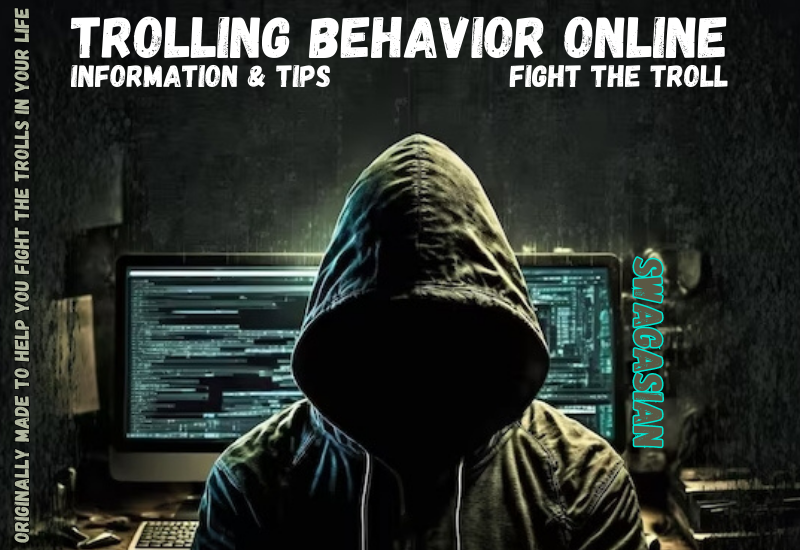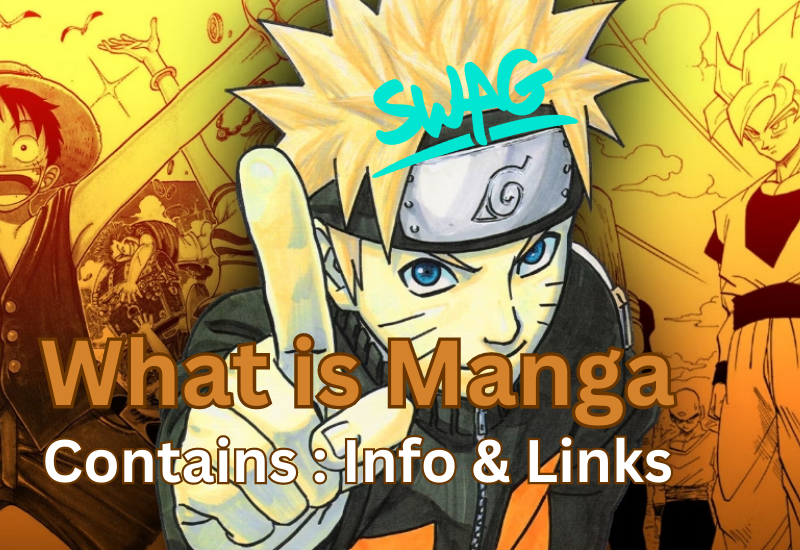Introduction about Trolls. But do they deserve it?
In the vast realm of the internet, a phenomenon known as trolling has emerged as a significant challenge, especially for young adults navigating online spaces. Trolling, characterized by deliberate provocation, harassment, and disruption, has become increasingly prevalent in today’s digital landscape. This article aims to provide young adults with insights into the various aspects of trolling, its impact on individuals and communities, and strategies to effectively deal with this troubling behavior.
History and Evolution
We will find out more about how trolling has a long history rooted in the early days of online communities. Originally referring to the act of posting controversial or inflammatory messages to elicit emotional responses, trolling has evolved with the rise of social media and the proliferation of online platforms. Today, trolling encompasses a wide range of activities, including cyberbullying, doxing, spreading misinformation, and engaging in hateful speech targeted at individuals or groups.
Motivations and Psychology
We will try to understand the motivations and psychology behind trolling is key to combating this behavior. Trolls often seek attention, power, and a sense of superiority over others. They hide behind the cloak of anonymity, using pseudonyms or faceless profiles, which allows them to act with impunity. The act of provoking strong reactions and manipulating emotions gives trolls a sense of control and satisfaction. It is essential for young adults to recognize these underlying motivations in order to protect themselves and maintain a healthy online experience.
Impact on Young Adults and Communities
We will see the effects trolling can have severe consequences for young adults. Victims often experience emotional distress, anxiety, and depression as a result of sustained harassment. The toxic online environment created by trolls can discourage open dialogue, stifle diverse opinions, and intimidate marginalized voices, depriving young adults of the opportunity to express themselves freely. Moreover, the spread of misinformation through trolling efforts can lead to confusion and undermine trust in reliable sources of information.

The basic Strategies to Deal with Trolls
- Recognize and Ignore: Trolls thrive on attention. By recognizing trolling behavior and consciously choosing not to engage, young adults can deprive trolls of the desired reaction. Ignoring trolls can help defuse their impact and discourage further harassment.
- Report and Block: Most online platforms provide reporting mechanisms to flag abusive or harassing content. Young adults should familiarize themselves with these tools and report trolls to platform administrators. Blocking trolls ensures that their interactions and influence are minimized.
- Seek Support: Dealing with trolling alone can be overwhelming. Young adults should reach out to trusted friends, family members, or online support groups to share their experiences and seek guidance. The solidarity and understanding of others can provide emotional support during difficult times.
- Practice Digital Resilience: Building resilience is crucial in the face of trolling. Young adults should develop a strong sense of self and recognize that the words of trolls do not define their worth. Building self-esteem, engaging in self-care, and nurturing offline relationships can help mitigate the negative impact of trolling.
- Foster Positive Online Communities: Creating and participating in positive online communities is an effective way to counteract the influence of trolls. By actively engaging in respectful discussions, supporting others, and promoting inclusivity, young adults can contribute to cultivating a healthier online environment.
Let’s dive a little deeper into this topic.
To understand the roots of trolling, we must journey back to the early days of online communities, where the seeds of this disruptive behavior were first sown. In the late 1980s and early 1990s, as the Internet began to gain popularity, bulletin board systems (BBS) and Usenet groups provided platforms for early online interactions. It was during this time that trolling, in its simplest form, began to take shape.
From Digital Pranks to Online Chaos
To understand the roots of trolling, we must journey back to the early days of online communities, where the seeds of this disruptive behavior were first sown. In the late 1980s and early 1990s, as the Internet began to gain popularity, bulletin board systems (BBS) and Usenet groups provided platforms for early online interactions. It was during this time that trolling, in its simplest form, began to take shape.
The term “troll” was derived from the fishing technique known as “trolling,” where a baited line is dragged behind a moving boat to provoke fish into biting. Similarly, early trolls sought to provoke emotional responses from other users by posting inflammatory or off-topic messages. Their intent was not to engage in meaningful conversation but rather to elicit strong reactions for their own amusement.
As the internet evolved, so did trolling. The advent of online forums, chat rooms, and social networking sites provided trolls with a broader canvas to sow discord and cause mayhem. In the late 1990s and early 2000s, internet culture and trolling began to intersect with the emergence of influential communities like 4chan, notorious for its chaotic and often controversial content.
With the rapid expansion of social media platforms and the widespread adoption of smartphones, trolling reached new heights. The anonymity and distance afforded by online platforms provided fertile ground for trolls to carry out their activities. They could hide behind pseudonyms, avatars, and burner accounts, shielding their true identities and evading accountability for their actions.
In recent years, trolling has become more prevalent and sophisticated, posing substantial challenges for individuals and online communities. Social media platforms have become hotbeds for trolling, with users exploiting algorithms, anonymity, and the viral nature of content to amplify their disruptive messages. The pervasive nature of trolling has also contributed to the spread of disinformation, further eroding trust in online information sources.
Trolling & Cyberbullying. How Schools Handle the Challenge
cyberbullying has emerged as a significant concern, posing unique challenges for schools. With the proliferation of social media platforms, messaging apps, and online forums, students have found new avenues to engage in harmful behavior toward their peers. Recognizing the gravity of the issue, schools have been actively implementing strategies to address and combat this new form of cyberbullying. Here are some approaches commonly employed by schools:
- Comprehensive Policies: Schools develop comprehensive policies that explicitly address cyberbullying. These policies define cyberbullying, outline the consequences for engaging in such behavior, and provide guidelines for reporting incidents. By establishing clear expectations and consequences, schools send a strong message that cyberbullying will not be tolerated.
- Education and Awareness Programs: Schools implement educational programs aimed at raising awareness about cyberbullying and its impact on individuals. These programs educate students on responsible digital citizenship, ethical online behavior, and the importance of empathy and respect in the digital world. By fostering a culture of empathy and promoting positive online interactions, schools aim to prevent cyberbullying incidents.
- Reporting Mechanisms: Schools encourage students, parents, and staff to report cyberbullying incidents promptly. They provide clear channels for reporting, such as dedicated email addresses or online forms, ensuring that victims or witnesses can report anonymously if needed. It is crucial for schools to take all reports seriously, thoroughly investigate incidents, and take appropriate disciplinary action when necessary.
- Collaboration with Parents: Schools recognize the vital role parents play in addressing cyberbullying. They actively engage parents through workshops, seminars, or informational sessions to provide guidance on recognizing the signs of cyberbullying, promoting open communication with their children, and encouraging safe online practices. By fostering a strong partnership between schools and parents, the collective effort to combat cyberbullying is strengthened.
- Social and Emotional Support: Schools prioritize the social and emotional well-being of their students. They provide counseling services, support groups, or access to mental health professionals who can assist victims of cyberbullying. These resources help students cope with the emotional impact of cyberbullying and develop resilience to navigate such challenges.
- Collaborative Partnerships: Schools collaborate with community organizations, law enforcement agencies, and online safety experts to address cyberbullying effectively. These partnerships enable schools to leverage expertise, share best practices, and access resources that can enhance their prevention and intervention efforts.
- Digital Literacy and Internet Safety: Schools integrate digital literacy and internet safety education into their curriculum. By teaching students about responsible online behavior, critical thinking, privacy protection, and the potential consequences of cyberbullying, schools empower students to make informed decisions while navigating the digital landscape.
- Restorative Justice Approaches: Some schools adopt restorative justice practices when addressing cyberbullying incidents. Instead of focusing solely on punishment, restorative justice aims to repair the harm caused by cyberbullying by facilitating dialogue and empathy between the victim, the offender, and the community. These approaches promote understanding, accountability, and a commitment to positive behavioral change.
It is important to note that each school may have its own unique approach to addressing cyberbullying, tailored to its specific context and resources. By adopting a multi-faceted approach that combines prevention, intervention, and support, schools can create a safer and more inclusive environment, empowering students to navigate the digital world with confidence and resilience.
Understanding the Anatomy of a Troll
A troll, in the context of online behavior, is an individual who engages in deliberate provocation, harassment, and disruptive activities in virtual spaces. To comprehend what makes a troll, it is essential to explore their underlying traits, motivations, and the tactics they employ. Here are the key elements that contribute to the makeup of a troll.
- Anonymity and Pseudonyms: Trolls often hide behind the cloak of anonymity, using pseudonyms or faceless profiles to shield their true identities. This anonymity provides them with a sense of freedom, enabling them to act with impunity and evade accountability for their actions.
- Provocation and Disruption: Trolls seek to provoke emotional reactions and disrupt online conversations. They intentionally post inflammatory or controversial content, aiming to elicit anger, frustration, or confusion from others. Their disruptive behavior often derails meaningful discussions and creates a hostile environment.
- Attention-Seeking: Trolls crave attention and validation from their actions. They derive satisfaction from the reactions they generate and the chaos they create. The more attention they receive, the more empowered they feel, fueling their motivation to continue trolling.
- Power and Control: Trolls often engage in trolling behavior to exert power and control over others. By manipulating emotions, instigating conflicts, and creating discord, they seek to assert dominance and feel superior to their targets.
- Lack of Empathy: Trolls typically lack empathy and disregard the feelings and well-being of others. They show little concern for the emotional impact their actions may have on their victims, viewing them merely as objects of amusement or targets for their malicious intentions.
- Entertaining Themselves: For some trolls, the primary motivation is the personal entertainment value they derive from causing chaos and disruption. They view trolling as a form of amusement, enjoying the reactions and drama that ensue.
- Group Dynamics: Trolls may operate individually or in organized groups. Within these groups, trolls reinforce and encourage each other’s behavior, creating a sense of camaraderie and validation for their actions. Coordinated attacks or “raids” on individuals or communities amplify the impact of trolling.
- Online Environments: The anonymity, distance, and lack of face-to-face interaction provided by online platforms contribute to the proliferation of trolling. These virtual spaces offer fertile ground for trolls to operate, as they can easily create multiple accounts or profiles to amplify their disruptive activities.
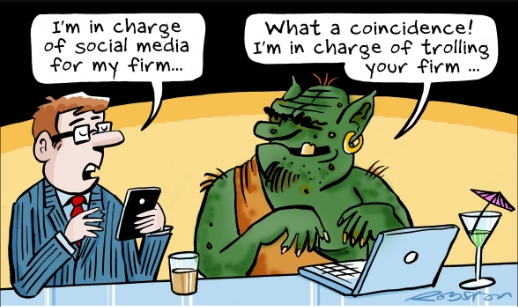
Trolling activities for financial gain
While the primary motivations for trolling are often related to seeking attention, entertainment, power, or control, it is worth noting that some individuals may engage in trolling activities for financial gain. Trolling for money typically occurs in specific contexts where individuals exploit online platforms or manipulate digital systems to generate revenue. It is important to highlight that while some individuals may troll for financial reasons, the majority of trolling behavior is driven by non-monetary factors such as personal amusement, power dynamics, or attention-seeking. Financially motivated trolling tends to be more targeted and strategic, often involving illegal or unethical practices.
Here are a few examples:
- Clickbait and Ad Revenue: Some trolls create sensational or misleading content with the aim of driving traffic to websites or online platforms. By generating high click-through rates, they can attract advertising revenue based on the number of views or clicks their content receives. This approach involves using provocative headlines, exaggerated claims, or controversial content to capture the attention of users and increase ad impressions.
- Online Scams and Fraud: Trolls may engage in deceptive practices, such as phishing, fake giveaways, or fraudulent schemes, to trick unsuspecting individuals and gain access to their personal information or financial resources. These trolls exploit people’s trust, using online platforms as a means to carry out their fraudulent activities for monetary gain.
- Affiliate Marketing: Some trolls may participate in affiliate marketing programs where they promote products or services through deceptive means. They may create fake reviews, manipulate online discussions, or use misleading tactics to drive sales and earn commissions for each referral or purchase made through their affiliate links.
- Cyber Extortion: In more severe cases, trolls may engage in cyber extortion, threatening individuals, businesses, or organizations with reputational damage or privacy breaches unless a ransom or payment is made. These malicious activities are driven by financial motives, seeking to exploit fear and vulnerability for personal gain.
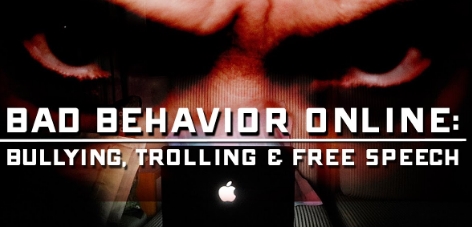
The impact trolling has on people
Trolling, particularly when it involves cyberbullying or harassment, can have severe negative effects on individuals’ mental health and well-being. While it’s challenging to establish a direct causal relationship between trolling and an increase in suicidal tendencies, there is evidence to suggest a correlation between online harassment and psychological distress, including an elevated risk of depression, anxiety, and suicidal thoughts. It’s important to approach this topic with sensitivity, recognizing the potential harm that trolling can cause.
When individuals are subjected to relentless online attacks, harassment, or degrading comments, it can deeply impact their self-esteem, self-worth, and overall mental state. The persistent and anonymous nature of online trolling can intensify feelings of helplessness, isolation, and despair, potentially exacerbating existing mental health issues or triggering new ones. The consequences can be particularly severe for vulnerable individuals, such as young people or those already struggling with mental health challenges. It is crucial to prioritize the well-being of those affected by trolling and cyberbullying. Efforts should focus on prevention, early intervention, and providing support to individuals who have experienced harassment. This includes implementing robust anti-bullying policies, fostering a culture of empathy and respect online, educating individuals about the impacts of trolling, and promoting effective reporting mechanisms for addressing incidents.
Providing mental health resources and support networks can be vital for those affected by trolling. Encouraging open conversations, reducing stigma around mental health, and connecting individuals with appropriate counseling or therapy services can help address the psychological consequences of trolling and provide necessary assistance to those in need. While trolling may not directly cause an increase in suicidal tendencies, the negative impact it has on individuals’ mental health cannot be ignored. By actively working to prevent and address trolling, promoting online safety, and providing support to those affected, we can strive to create a more compassionate and inclusive digital landscape, reducing the potential harm inflicted by online harassment.
The Impact of Trolling on young adults
The impact of trolling on young adults can be particularly significant due to their developmental stage, vulnerability, and reliance on digital platforms for social interaction. It is crucial for parents, educators, and society as a whole to support young adults in navigating the challenges posed by trolling. This includes promoting digital literacy, teaching responsible online behavior, encouraging open communication about online experiences, and providing access to mental health resources. By fostering a safe and supportive environment, we can help young adults develop resilience, cope with trolling incidents, and navigate the digital world with confidence and well-being. Here are some ways in which trolling can affect young adults.
- Emotional Distress: Trolling can cause intense emotional distress for young adults. The negative and hurtful comments directed at them can lead to feelings of shame, humiliation, anger, and sadness. These emotions can be amplified by the public nature of online platforms, making it challenging for young adults to escape or find respite from the trolling.
- Self-esteem and Self-worth: Trolling attacks on personal appearance, abilities, or character can deeply impact young adults’ self-esteem and self-worth. Negative experiences online can lead to a distorted self-perception, causing them to doubt their value and worthiness. This can have long-term effects on their confidence, relationships, and overall well-being.
- Social Isolation: Young adults may withdraw from online interactions or even real-life social engagements due to the fear of being targeted by trolls. The fear of judgment, ridicule, or humiliation can isolate them from their peers and limit their opportunities for social connection, potentially leading to feelings of loneliness and exclusion.
- Mental Health Challenges: Trolling can contribute to the development or exacerbation of mental health issues among young adults. Persistent online harassment can trigger or worsen conditions such as depression, anxiety, and low self-esteem. It may also increase the risk of self-harm or suicidal ideation.
- Academic Performance and Concentration: Constant exposure to trolling can have a detrimental impact on young adults’ academic performance. The emotional toll and distraction caused by trolling can make it difficult for them to concentrate, focus on their studies, and fully engage in their educational pursuits.
- Online Safety Concerns: Trolling can create a sense of insecurity and mistrust in online environments for young adults. They may become hesitant to share personal information, express their opinions, or engage in open discussions due to the fear of being targeted or humiliated by trolls. This can restrict their ability to fully participate in online communities and take advantage of the positive aspects of digital platforms.
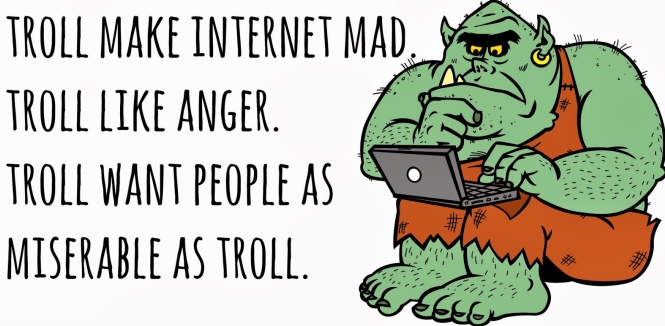
Interview with An Anonymous Troll
TJ-Webmaster: Thank you for agreeing to this interview. To maintain your anonymity, we won’t ask for personal details. Let’s begin. Can you tell us why you engage in trolling behavior online?
Troll: Well, it’s a form of entertainment for me. I enjoy the reactions I get from people when I provoke or irritate them. It’s a way to pass the time and have some laughs at their expense.
TJ-Webmaster: Do you ever consider the negative impact your trolling may have on others, such as emotional distress or harm to their mental health?
Troll: I’m aware that some people may get upset by what I do, but I see it as their problem, not mine. They should toughen up and not take things so seriously. It’s just the internet, after all. If they can’t handle a few mean comments, that’s on them.
TJ-Webmaster: Have you ever considered the possibility that your actions might contribute to a toxic online environment and make it harder for people to have meaningful discussions?
Troll: Honestly, I don’t really care about the overall environment. I’m just here to have fun and stir things up. If people can’t handle a little chaos, then maybe they shouldn’t be online. It’s not my responsibility to make things better.
TJ-Webmaster: Some argue that trolling is a form of bullying and can cause significant harm to individuals, especially vulnerable ones. What are your thoughts on that?
Troll: Look, I understand that some people may be more sensitive or vulnerable, but that’s not my concern. It’s not my job to protect everyone’s feelings. If someone can’t handle a few insults or jokes, maybe they shouldn’t be online. They need to toughen up.
TJ-Webmaster: Do you ever consider the possibility of changing your behavior or finding more positive ways to spend your time online?
Troll: Not really. I find trolling amusing, and I have no intention of stopping. It’s a way for me to express myself and have some fun. If people can’t handle it, that’s their problem, not mine.
Interviewer: Lastly, is there anything you would like to say to those who have been negatively affected by your trolling or to those who believe trolling should be discouraged?
Troll: To those who have been affected, I would say they need to develop a thicker skin. Life is full of challenges, and if they can’t handle a few comments on the internet, they’ll have a hard time in the real world. As for those who want to discourage trolling, good luck trying to stop me. I’ll continue doing what I do because it amuses me.
Interviewer: Thank you for sharing your perspective, even though we may have differing opinions on the matter.
Conclusion…last words
preparing this article and working on the actual writing, it saddens me that also I am a victim of trolling since I was in high school. It was a horrible time, and maybe this is why I am a webmaster and not a doctor. So, I wanted to end this article with a few additional points worth mentioning:
- Legal Consequences: Trolling behavior may cross legal boundaries, such as harassment, defamation, or hate speech, depending on jurisdiction. It’s important to recognize that there can be legal consequences for engaging in trolling activities that violate laws or regulations. Encouraging individuals to understand the legal implications of their online behavior is crucial for promoting responsible digital citizenship.
- Role of Social Media Platforms: Social media platforms play a significant role in addressing trolling. They have a responsibility to enforce their community guidelines, promptly respond to reports of trolling, and take appropriate action against offenders. Continued efforts by platforms to enhance their content moderation systems, provide stronger user controls, and foster a safer online environment are essential.
- Cultural and Societal Factors: Trolling can sometimes be influenced by broader cultural or societal issues, including prejudices, stereotypes, or systemic inequalities. These factors can contribute to the targeting of specific individuals or groups. Recognizing and addressing these underlying issues is vital for promoting inclusivity, empathy, and fairness both online and offline.
- Long-term Impact: Trolling incidents can have long-lasting effects on individuals, shaping their online behavior and attitudes. Some victims of trolling may become more cautious or guarded in their online interactions, while others may develop a negative perception of online communities or experience a loss of trust. Understanding the long-term impact of trolling can help inform prevention and intervention strategies.
- Support for Trolls: It is worth noting that some trolls may themselves be dealing with personal issues or have experienced harm in their lives. While their behavior is not excusable, addressing the root causes and providing appropriate support systems, such as mental health resources or counseling, can potentially help break the cycle of trolling and promote positive change.
Resources: Wikipedia and library , Scammers the Earning Troll,

